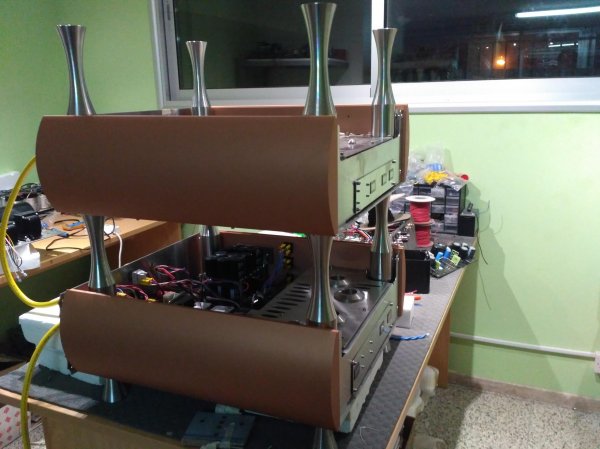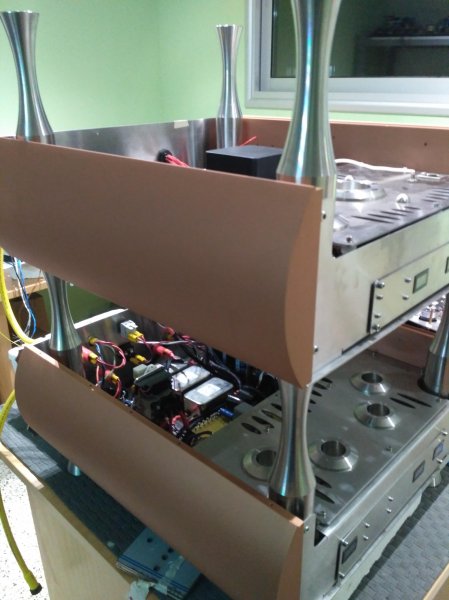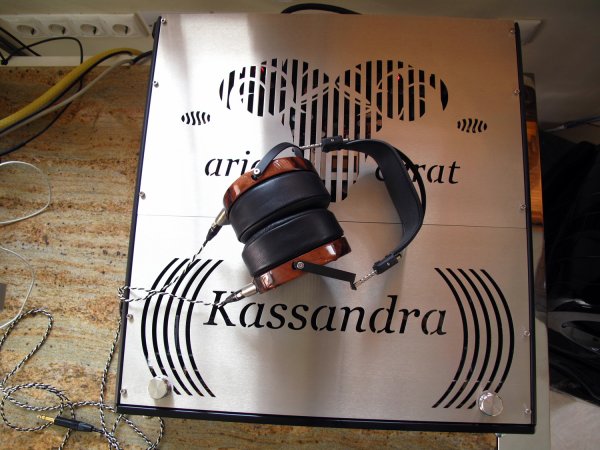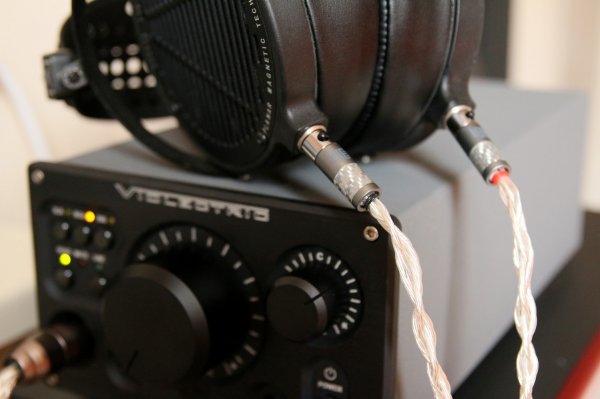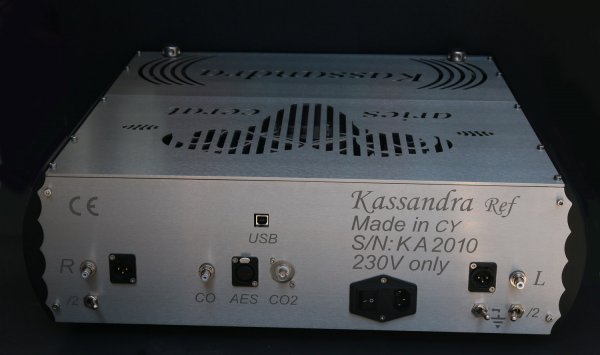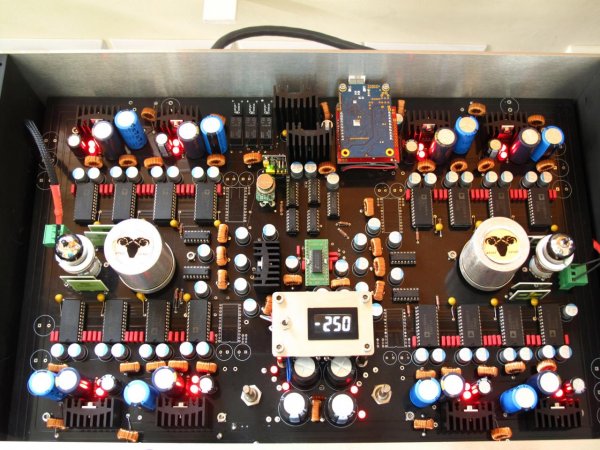View attachment 43408
Hi Astro.
Can you tell me what the screen that marks -250 means in your Kassandra?
Hello nonesup
It is the tube bias current. The bias on the Siemens E280F can be adjusted from 190 - 290. I find I like it best on 250. It only needs to be set periodically, i find it holds that value for some time accurately.
By setting it lower it sounds a bit thinner, brighter, and setting it higher sounds a bit fuller and more body. It is subtle but a nice facility. it allows some system tuning for the rest of your system. I have just bought 2 pairs of Siemens tubes, same as the ones in the DAC with date codes, they cost me only 110 euros. One pair of tubes should be good for 2 years at least. So I am good for 6+ years!
On the digital board, you can see all the AD1855 chips. Many think they are the best sounding chip ever made, and have no extra processing of the signal, so as intact as possible, straight though bit prefect data. The USB board is at the top of the picture, and the super clock for the SPDIF is in the centre above the bias meter position. The 2 aluminium tubes with the AC logo on are the custom made I/V transformers. They convert the current to voltage coming off the chip array. This technique is also used by Audio Note and Ypsillon. There are 8 separate power supplies to the digital array, the red LEDs.
I don't know the technicalities, but Stavros has no coupling capacitors in the signal path. Normally you have caps after the tubes to negate DC I believe? But I do know coupling caps have a big influence on the sound, and any cap no matter how good will have a loss, a negative effect. Compared to my Audio Note DAC 5 the Kassandra is much more detailed and dynamic, but so smooth and zero fatigue, no digital sound. It also crucially has the mass and body that you hear in a top TT, unlike a lot of digital which doesn't, sounds flat and anaemic. The midrange is wonderful, the best I have ever heard in digital.
Under this huge digital board there is actually 2 large output transformers. The front section of the DAC, under the separate top plate houses a very large power supply, big torroid, large caps array and 2 large chokes. When I power the DAC down, the LEDs on the power supply stay lit for nearly an hour! This indicates the amount of energy storage in the power supply, what Stavros calls his 'Pseudo Battery' supply. So pure clean power. I don't have a photo of this section, but Stavros does.








